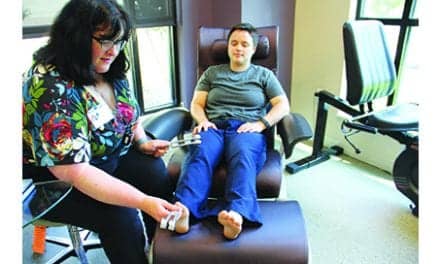
The feds may taketh with one hand, but with the other, could giveth the keys to the kingdom. To wit: Therapy providers displeased by a scenario that could cut Medicare reimbursements by one-fourth may be encouraged by the potential outcome of a proposal that could shield their turf from encroachment by MDs. With the proliferation of health/fitness/wellness services offered by PTs as an adjunct to therapeutic treatment, this could amount to a sizeable chunk of revenue over time and, at the same time, help insulate them from losing revenue.
The left hand: The Centers for Medicare and Medicaid Services (CMS) recently proposed a physician fee schedule rule that could take effect in January 2011, saddling PTs and other care providers with a 6.1% dip in Medicare payments, atop a 21.3% cut that failed to take hold this year. A multiple-procedure payment reduction policy could trigger lower payments for outpatient therapy services.
The right hand: The Medicare Payment Advisory Commission (MedPAC) is considering a policy option that would rein in physician self-referral of physical therapy services under certain circumstances, and a move that would exclude physical therapy from in-office ancillary services. Results of some studies have shown that physicians who have a financial stake in physical therapy practices referred patients with musculoskeletal injuries for treatment more often than other physicians, and physician-owned physical therapy practices accounted for more such treatments per patient. The commission is examining ways to hinder what it characterizes as excessive and unwarranted referrals of this type.
The American Medical Association is a formidable advocate for its members, but in recent years the American Physical Therapy Association and American Occupational Therapy Association have made significant headway in advocating for regulations that would shield and benefit their members.
MedPAC gives no recommendation of what action should be taken to blunt overamped referrals, but on page 232 in the conclusion of Chapter 8, MedPAC says, “These strategies could be considered individually or in combination, and each has strengths and weaknesses and the potential for unintended consequences. In future work, the Commission plans to further examine these options with the goal of crafting policy recommendations.”
Should MedPAC eventually opt for a policy curtailing the unbridled reach of physicians into the realm of therapy—comprising physical, occupational, and speech-language services—it could have long-term, wide-ranging ramifications for mapping the domain of therapy providers in the coming years. The demographic of Baby Boomers—estimated by the Census Bureau to number nearly 76 million as of April 1—is in play. Enacting such a policy could help prevent therapy practitioners from having their wings clipped before they have a chance to grow, and stem the proliferation of physicians who have increasingly referred patients to therapeutic services under their control.
Stay tuned.
I’ve curated this issue of RM. Editor Rogena Silverman returns shortly.
—JUDY O’ROURKE
ASSOCIATE EDITOR





